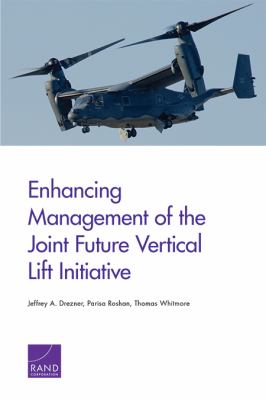
Book
|
Enhancing management of the joint future vertical lift initiative
Copies
1 Total copies, 1 Copies are in,
0 Copies are out.
Title
Enhancing management of the joint future vertical lift initiative
Digital Link
Subjects
Language
English
Published
Santa Monica, CA : Rand Corporation, [2017].
Publication Desc
xv, 105 pages : color illustrations, chiefly color charts, figures ;
ISBN
0833098373
(paperback)
Series
Dimensions
23 cm.









